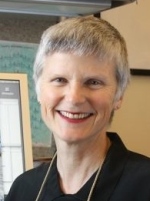
I was very fortunate this fall to be asked to interview Larry Lessig for the EDUCAUSE Now podcast series, produced by Gerry Bayne. Gerry produced a teaser for my piece as well as a full-length feature interview segment. He was also kind enough to supply me with the raw audio of the entire telephone interview I conducted with Professor Lessig. I’m podcasting that extended interview here because the last bit didn’t make it into the EDUCAUSE productions. I certainly understand why: for the last ten minutes or so, I took off in a different direction, probing Professor Lessig’s recent decision to put the Lessig Blog on indefinite hiatus. There were some puzzling statements in his valedictory blog post that I wanted to clarify if I could. I also wanted to register not only my disappointment but my dismay at his decision–and to suggest, as respectfully as possible, that his decision was a terribly ironic follow-on to his stirring defense in Remix of the importance of blogging, a defense that included a haunting passage on what blogging had meant to him because of, or despite, his own emotional vulnerabilities. As someone who’s lapsed into blogging silence far too often, I understand very well how draining it can be over the long haul, and I can only imagine the technical challenges–spam, chief among them–of an A-level blog like Larry Lessig’s. And a third child: yes, even with only two I can well imagine how number three would ramp up all the family responsibilities. The new job, ditto. That said, I also feel very strongly that we’ve only begun to explore this medium, and that it’s vitally important to have voices like Prof. Lessig’s in the blogosphere to demonstrate that exploratory, essayistic, informal writing has academic worth–or should. Is it possible Prof. Lessig doesn’t realize how radical an act his own blogging was?
As you’ll hear, I wasn’t entirely successful in my quest for clarification, especially when it came to Prof. Lessig’s new job and the role it seems to have played in his decision. I hope I was successful, though, in conveying to him how important his work as a blogger continues to be to me and to many others. (The comments on his last post are quite moving in their gratitude.) And I hope his voice will emerge into the blogosphere yet once more, not within an omnibus site like the Huffington Post, but on a domain of his own. It’s the repeated, continued forays in those domains of our own that define us as bloggers, that tell our odysseys–and that offer a paradigm beyond branded pundit aggregation.
I’m grateful to Larry Lessig for taking the time to speak with me, and to EDUCAUSE for the opportunity to do the interview. It was a daunting and exhilarating experience. NB: the first ending is followed by a coda, so keep listening.
Podcast: Play in new window | Download (23.1MB)






